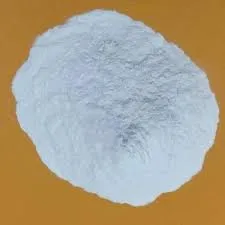
Set . 25, 2024 18:18 Back to list
methylhydroxyethyl cellulose
The Versatile Applications of Methyl Hydroxyethyl Cellulose
Methyl Hydroxyethyl Cellulose (MHEC) is a versatile, non-ionic cellulose ether that has become an essential ingredient in various industries due to its unique properties. As a derivative of cellulose, which is the most abundant organic polymer on Earth, MHEC offers a blend of functionalities that make it particularly valuable in areas such as construction, pharmaceuticals, personal care products, and food processing.
What is Methyl Hydroxyethyl Cellulose?
MHEC is synthesized by the alkali treatment of cellulose, followed by the reaction with methyl and hydroxyethyl groups. This chemical modification provides MHEC with water solubility, thermal stability, and good film-forming capabilities, which are not found in its parent cellulose form. The variations in the degree of substitution (the number of hydroxyethyl and methyl groups attached to the cellulose backbone) dictate the performance characteristics of MHEC, including its viscosity, solubility, and gel-forming ability.
Applications in the Construction Industry
One of the most significant applications of MHEC is in the construction industry, particularly in the formulation of tiling adhesives, joint compounds, and plastering materials. It works as a thickening agent, improving the viscosity and workability of these materials. MHEC enhances water retention, which is crucial for preventing the rapid drying of cement-based products. This property helps in ensuring that the adhesive retains moisture long enough for proper curing. Moreover, MHEC contributes to the ease of application, allowing for better leveling and smoother finishes in construction projects.
Role in Pharmaceuticals
methylhydroxyethyl cellulose

In the pharmaceutical sector, MHEC is employed as a binder, thickening agent, and film-forming agent in various dosage forms, including tablets and ointments. Its biocompatibility and non-toxic nature make it an ideal excipient for drug formulations. MHEC assists in controlling the release of active ingredients, thus playing a crucial role in sustained-release formulations. Additionally, its ability to form gels and disperse in water allows for its use in ocular preparations, providing extended contact time with the eye and enhancing therapeutic effects.
Personal Care and Cosmetics
MHEC is extensively used in the personal care and cosmetic industry owing to its thickening and stabilizing properties. It is found in products such as lotions, creams, shampoos, and conditioners, where it helps maintain consistency and stability. Additionally, MHEC provides excellent skin feel and improves the texture of cosmetic formulations. Its water-binding ability ensures hydration and forms a protective barrier on the skin, making it a popular ingredient in moisturizing products. Furthermore, the film-forming characteristics of MHEC allow for enhanced wear time and performance in cosmetic applications.
Food Processing Enhancements
The food industry also benefits from the incorporation of MHEC, where it serves as a thickener, emulsifier, and stabilizer in various food products. Its properties help maintain the desired viscosity and texture in sauces, dressings, and dairy products. MHEC can also improve the mouthfeel of products, providing a creamier texture that is often sought after in food applications. Importantly, MHEC is considered a safe ingredient for food use, adhering to regulatory standards that ensure its safety and efficacy.
Conclusion
Methyl Hydroxyethyl Cellulose is an indispensable material with a wide range of applications across multiple industries. Its unique properties, such as water retention, viscosity enhancement, and compatibility with various formulations, make it a preferred choice for manufacturers looking to improve the performance of their products. Whether in construction, pharmaceuticals, personal care, or food processing, MHEC continues to play a crucial role in advancing product quality and effectiveness, cementing its place as a vital ingredient in modern formulations. As industries evolve and focus on innovation, the demand for multifunctional agents like MHEC is likely to grow, leading to further advancements and applications in the years to come.
-
Versatile Hpmc Uses in Different Industries
NewsJun.19,2025
-
Redispersible Powder's Role in Enhancing Durability of Construction Products
NewsJun.19,2025
-
Hydroxyethyl Cellulose Applications Driving Green Industrial Processes
NewsJun.19,2025
-
Exploring Different Redispersible Polymer Powder
NewsJun.19,2025
-
Choosing the Right Mortar Bonding Agent
NewsJun.19,2025
-
Applications and Significance of China Hpmc in Modern Industries
NewsJun.19,2025







